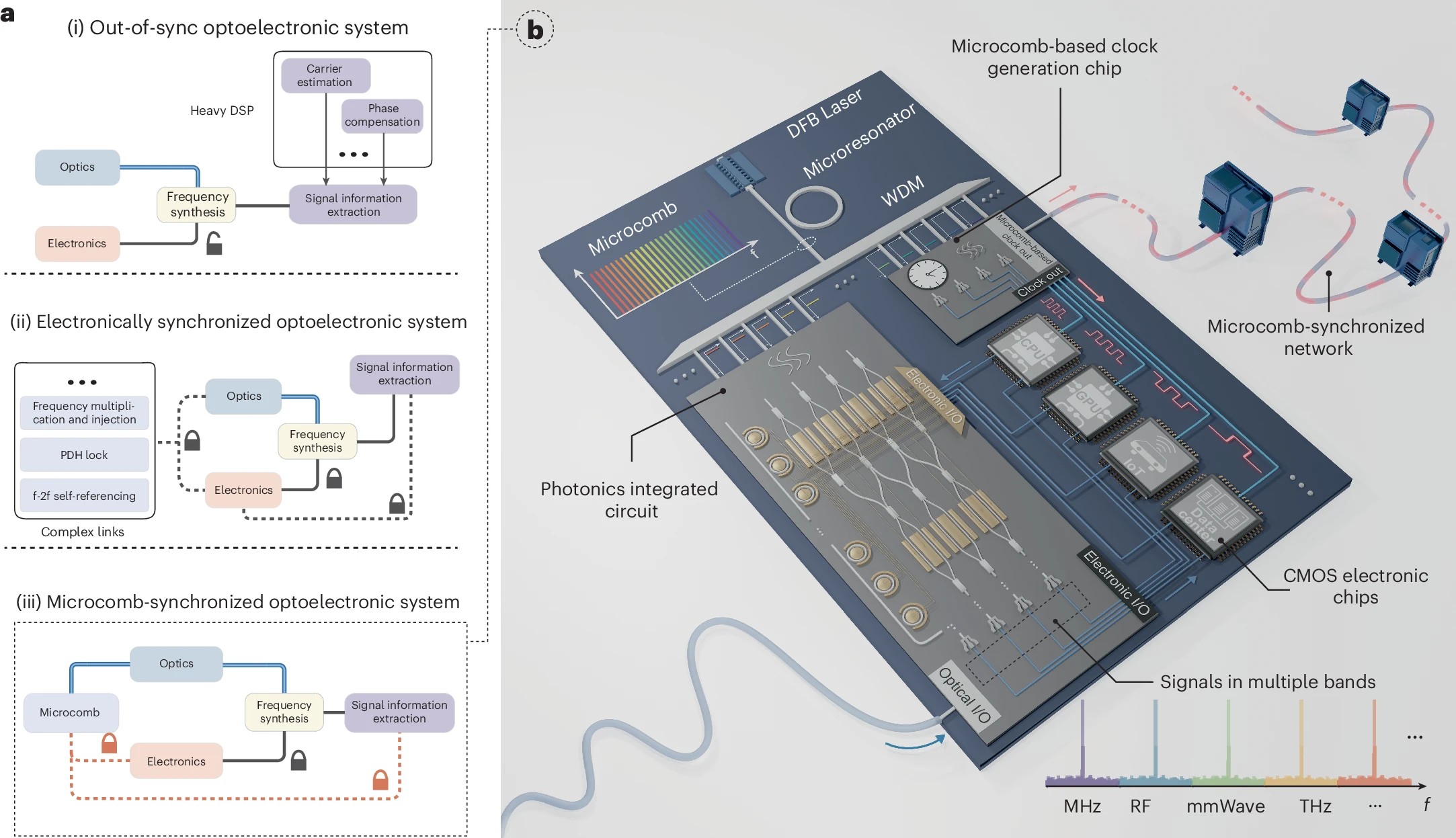

On February 25, 2025, a research team led by Professor Chang Lin from the School of Electronics at Peking University, in collaboration with Professor Li Wangzhe's group from the Institute of Space and Information Technology Innovation at the Chinese Academy of Sciences, published a groundbreaking study titled Microcomb-synchronized optoelectronics in the journal Nature Electronics. This research marks a significant breakthrough in the application of photonic chip clocks in information systems, highlighting China's major progress in the field of photonic chips. https://ele.pku.edu.cn/info/1012/3513.htm
Technical Breakthrough: Harnessing Light to Revolutionize Chip Performance
Traditional electronic chips rely on electronic oscillators to generate clock signals, which are often slow, power-hungry, and prone to overheating. Professor Chang Lin's team innovatively integrated "optical frequency comb" technology into chip design, constructing a racetrack-shaped photonic loop that leverages the speed of light to achieve ultra-high-speed clock control. This technology increases chip time control speed by 100 times, with clock frequencies exceeding 100 GHz—far surpassing the current 2-3 GHz main frequencies of CPUs and GPUs.

Application Scenarios: Transforming Multiple Industries
1. Communications: A single chip can support 5G/6G communications, reducing hardware iteration costs and lowering device upgrade expenses. Experiments have shown that the chip can achieve 6G communication with a modulation format as high as 256-QAM, with perception accuracy reaching the centimeter level.
2. Computing: The clock frequency breakthrough of 100 GHz significantly enhances artificial intelligence computing power, providing stronger support for large-scale model training.
3. Other Fields: In autonomous driving, the integration of millimeter-wave radar can improve perception accuracy and response speed. In aerospace remote sensing, it can enhance satellite imaging resolution.
Research Significance: From "Catch-Up" to "Leadership"
This technology not only addresses the performance bottlenecks of traditional electronic chips but also integrates ultra-low-loss silicon nitride photonic chips to synthesize microwave signals from megahertz to 105 GHz. This achievement has been reported by Guangming Daily and the People's Daily WeChat public account, signifying China's leap from catching up to leading in the field of photonic chips.
How GENIUNEIC Technology Can Help
At GENIUNEIC Technology, we specialize in BOM (Bill of Materials) optimization solutions, helping manufacturers reduce costs, enhance performance, and ensure supply chain stability. With over 20 years of experience, we deliver tailored solutions for your electronic devices. Our expertise in electronic components supply ensures that you get the highest quality parts at the most competitive prices.
If you're ready to transform your BOM and gain a competitive edge, let’s talk. GENIUNEIC Technology is your trusted partner for BOM optimization. We combine technical expertise with cost-effective solutions to help you meet regulatory standards and boost operational efficiency. Contact us today to explore how we can help your business thrive.
Professor Chang Lin of Peking University stated that this technological breakthrough will bring revolutionary changes to practical applications such as intelligent computing, 6G communications, and aerospace remote sensing. In the future, photonic chips are expected to find widespread applications in more fields, driving the rapid development of related industries. As we look ahead, GENIUNEIC Technology is poised to support your journey towards optimizing your supply chain and embracing innovative technologies like photonic chips.


